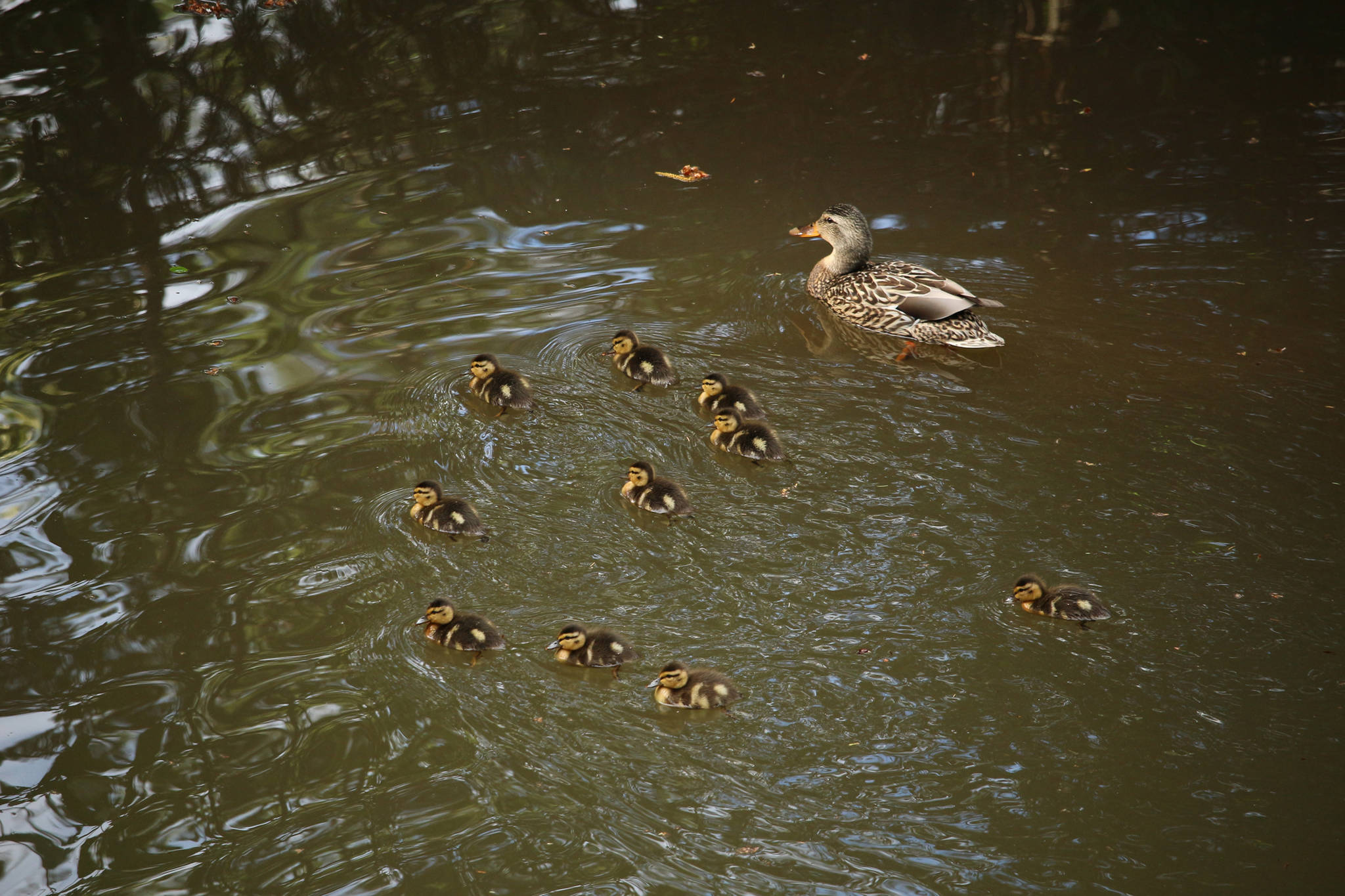A great ruckus arose on my pond, one afternoon in early June, while I was leisurely scribbling, comfortable in my big easy chair: agitated high-decibel quacking of mallard. Of course, I leaped out of my chair to see what was happening, just in time to see an eagle swoop up from the pond into a spruce tree, dropping a couple of feathers as it landed.
Quickly, I checked the surface of the pond — a female mallard had been bringing her brood of 10 tiny ducklings (not much bigger than my fist) to the pond to forage. There was a special place on the far side of the pond, right next to a tuft of weeds, where she would call them to come and rest under her wings. Having watched this family for a few days, of course they were ‘my’ ducks and I didn’t want them to become an eagle snack.
I immediately counted the little ones — no easy task, because they were scooting all over the pond, in and out of cover. But finally, all were accounted for. Mama mallard went on quacking, about one quack per second, for the next two hours. Upon consideration, I guessed that the eagle’s failed attempt had been on the female herself; a duckling would hardly have made one mouthful.
That eagle sat in the tree for over an hour, all of its attention clearly focused very intently on the duck family. It was not distracted by a bunch of juncos flitting about in the tree or around the seed feeder, or by me going out on the deck. A hummingbird close by its head warranted only a sidelong glance. Twice in that long span of time, the eagle trust forward its head and started to lift its wings, as if to launch a new attack. But then it settled down again, one foot tucked up under its feathery skirts.
Meanwhile, the little ducklings often ventured out from the shelter of overhanging alders to forage. They were adept at diving and scuttled over the pond surface in all directions. Mama duck managed to call them back periodically, only to have them scoot out again. But she herself seldom went far from those protective alder branches.
After more than an hour, the eagle did some intensive preening and took off, but the female duck went on quacking, loudly and constantly. All the ducklings scattered over the pond, foraging actively, while mama continued to fuss. About thirty-five minutes later, back came the eagle and made another pass. It failed again and went to perch in the spruce tree. This time, however, it was very inattentive, fidgeting and looking all around, and it flew away after about five minutes. Needless to say, during all this activity, I got no writing done at all.
The departure of the eagle was a relief for both me and the female duck, although she went on protesting for another hour. The little ones were, naturally, oblivious of the threat, responding only to the need for food and (sometimes) the instructions of their mother.
Several days later, all the little ducklings were still accounted for. They were bigger now, maybe almost twice as big as before. Mama duck had more trouble fitting them all under her wings when they rested. In addition, on the pond was a solo female, who probably lost her eggs to a predator, but who was assiduously attended by a male that was still nattily dressed in breeding plumage. So perhaps she will have another chance to rear a brood.
This was the first time I’d ever seen an eagle at my pond, in all the 25 or more years of watching. There has been the occasional pygmy owl, and several goshawks. All the ‘gos’ were in brown plumage, i.e. not that of an adult male. Some of their attacks were successful. Of course, I have to wonder what predatory events I might have missed, while otherwise occupied.
Another day, another place: the day after the eagle threat, Parks and Rec hikers went to Cowee Meadows. We always go there in June (some of us go twice) to revel in the wildflower show. This is the fantastic meadow where we have, several times, recorded over 70 (!) species of flower in bloom in June. This time, we didn’t count them. Nevertheless, we enjoyed a good showing of lupine and buttercups; shooting stars were still splendid and the wild irises were just starting to open. More will come, later.
Some welcome news is that the Alaska State Parks crews have been working on the muddy, root-y parts of the trail, making it easier and safer for walking. They were at work on this day and we all said a big thank you. Yay, State Parks!
• Mary F. Willson is a retired professor of ecology.

